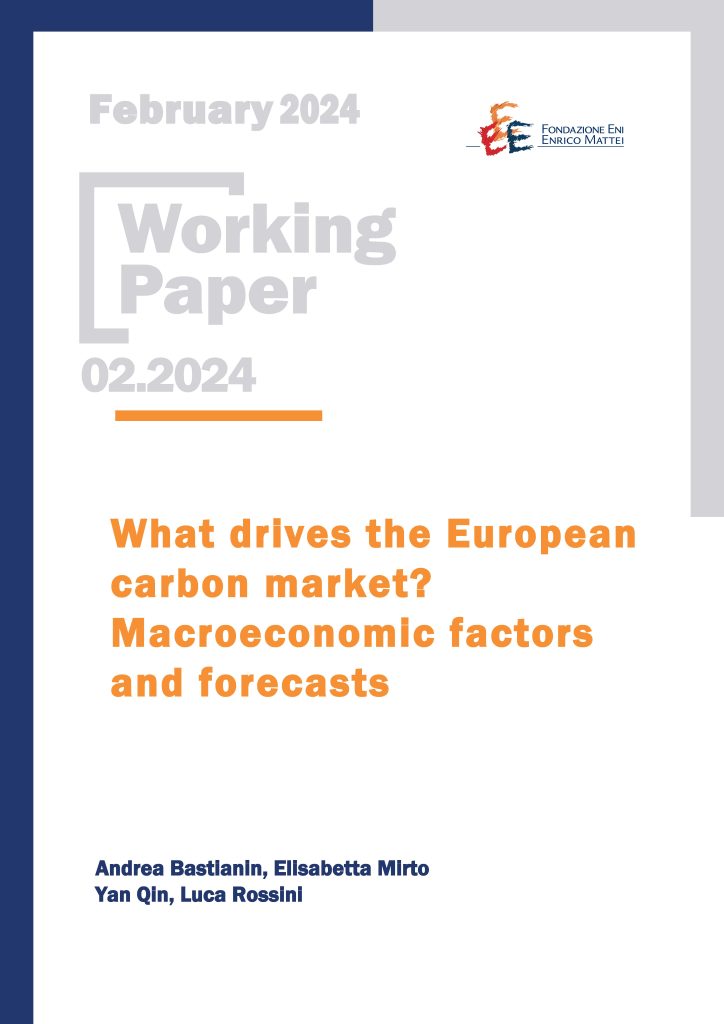What drives the European carbon market? Macroeconomic factors and forecasts

13.02.2024
Andrea Bastianin (University of Milan and Fondazione Eni Enrico Mattei); Elisabetta Mirto (University of Milan); Yan Qin (London Stock Exchange Group); Luca Rossini (University of Milan and Fondazione Eni Enrico Mattei)
C11, C32, C53, Q02, Q50
Bayesian inference, Carbon prices, Climate Changes, EU ETS, Forecasting
Putting a price on carbon – with taxes or developing carbon markets – is a widely used policy measure to achieve the target of net-zero emissions by 2050. This paper tackles the issue of producing point, direction-of-change, and density forecasts for the monthly real price of carbon within the EU Emissions Trading Scheme (EU ETS). We aim to uncover supply- and demand-side forces that can contribute to improving the prediction accuracy of models at short- and medium-term horizons. We show that a simple Bayesian Vector Autoregressive (BVAR) model, augmented with either one or two factors capturing a set of predictors affecting the price of carbon, provides substantial accuracy gains over a wide set of benchmark forecasts, including survey expectations and forecasts made available by data providers. We extend the study to verified emissions and demonstrate that, in this case, adding stochastic volatility can further improve the forecasting performance of a single-factor BVAR model. We rely on emissions and price forecasts to build market monitoring tools that track demand and price pressure in the EU ETS market. Our results are relevant for policymakers and market practitioners interested in quantifying the desired and unintended macroeconomic effects of monitoring the carbon market dynamics.
***
Suggested Citation: A. Bastianin, E. Mirto, Y. Qin, L. Rossini, ‘What drives the European carbon market? Macroeconomic factors and forecasts’, Nota di Lavoro 02.2024, Milan, Italy: Fondazione Eni Enrico Mattei
